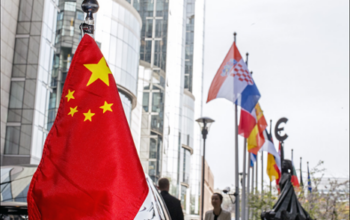It is Saturday. A man wearing a yellow high-visibility vest shouts at a group of police officers in riot gear who are speed-walking past: ‘It is us, the gilets jaunes, who are the nice guys!’ One of the officers sarcastically replies: ‘Oh, really?’. Scenes like these are not unusual these days. Since November, the gilets jaunes (‘yellow vests’) are protesting in France; the media shows images of rioting protesters, comparisons of the police nationale with the Gestapo are thrown into the room by protesters. Yet, the story of police violence and riots leaves more to uncover than might be apparent at first glance.
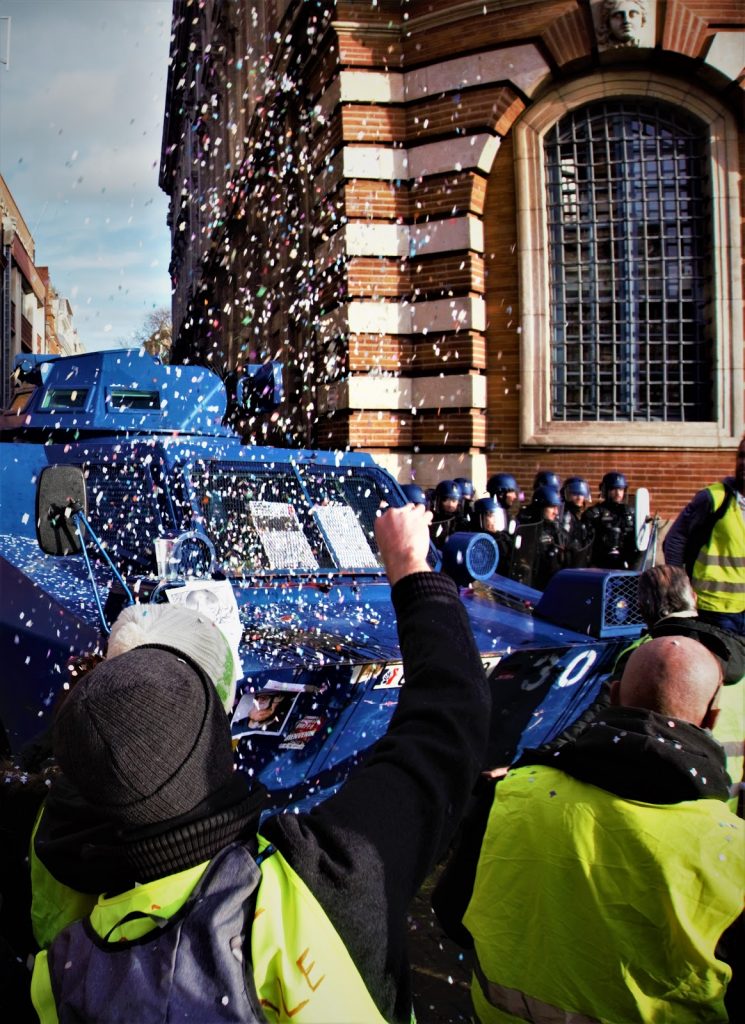
The Same Procedure as Last Saturday? The Same Procedure as Every Saturday!
Since a good three months, the gilets jaunes are protesting all over France leaving the occasional trail of anti-Macron graffiti, destroyed ATMs and broken windows of luxury shops. Their protests follow a similar pattern every Saturday: It starts with a happily chatting and singing crowd gathering at midday. Some bring drums, others flags and banners. As the protest continues the chants calling for Macron’s resignation begin to mix with those directed against the police. Some have brought white roses as a sign of peacefulness, others hold up pictures of bloody faces – the faces of those wounded by the police.

The clashes and destruction that occasionally follow are not the result of an irrational mob, a ‘hateful crowd‘, set out to destroy whatever stands in their way. Of course, there might be some that see vandalism as a sport. But altogether, it is the anger and frustration of those who felt unheard and forgotten for far too long and where exposed to non-physical violence in form of social injustices. It is an anger which now surfaces with the destructive force of a tsunami. The sad thing is that for some physical violence as response to this economic and psychological violence appears to be the only way to be noticed.
It is a shame that the French government did not react until after increasingly violent protests in early December. It seems to confirm that the only way to be heard by those in power is chaos and destruction. It is a shame that the images of the gilets jaunes shown on the news seem to portray little else but this chaos and destruction. And it is a sad commentary on this society which appears to be only interested in the news if it shows violence and scandal.
Scenes From a Protest
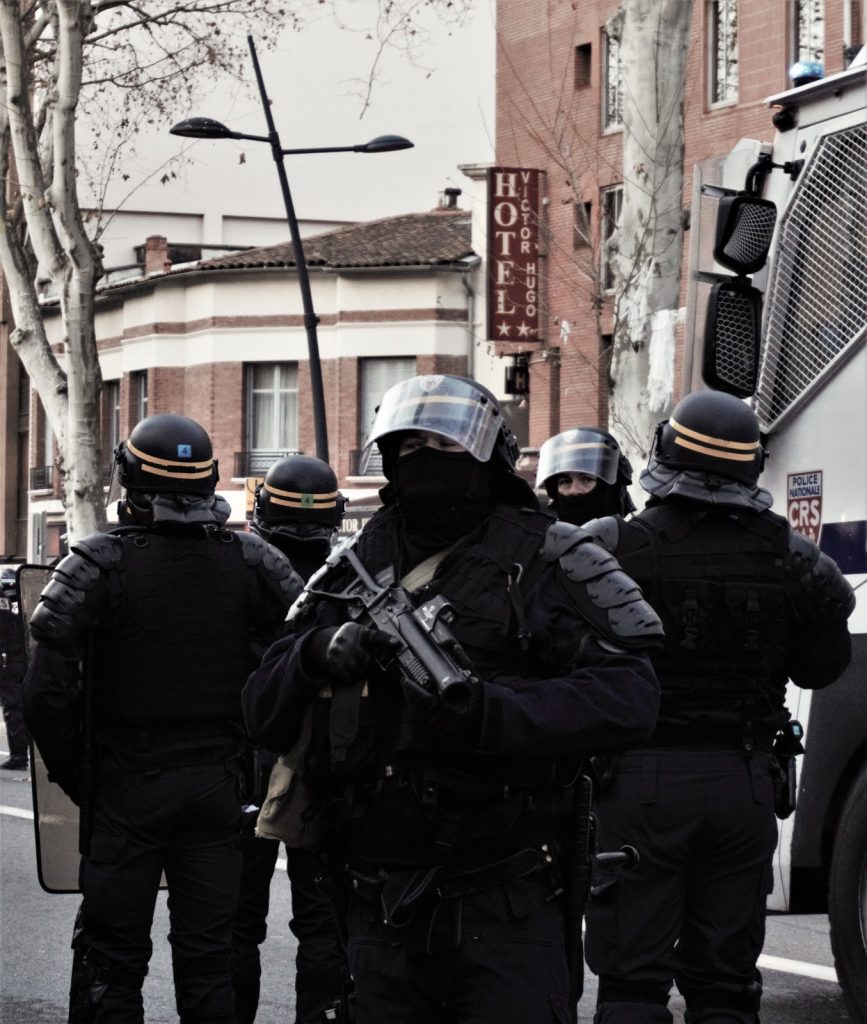
Not all of the violence, however, originates from the few gilets jaunes that are prone to destruction. According to government figures, the protests have seen at least 1700 protesters injured and ten dead in the time until early February. The far-left Parti Ouvrier Indépendant (POI, Independent Workers’ Party) speaks of more than 2000 injured protesters, 124 severely wounded gilets jaunes, 20 blinded by LBD 40 flash-balls, 4 hands torn off by GLI-F4 grenades the use of which has been defended by Interior Minister Castaner despite the known mutilating potential of these tear gas and stun grenades.
It does not come as a surprise that these incidents of police violence only spark more anger. That is, once again, not to say that all gilets jaunes are nothing but peaceful, or that those protesters who resort to violence and vandalism should not be held accountable. Neither is it to say that all measures taken by the police and the government are unreasonable. Yet, it certainly prompts questions about limits of state violence and the legitimacy of the use of force by the police.
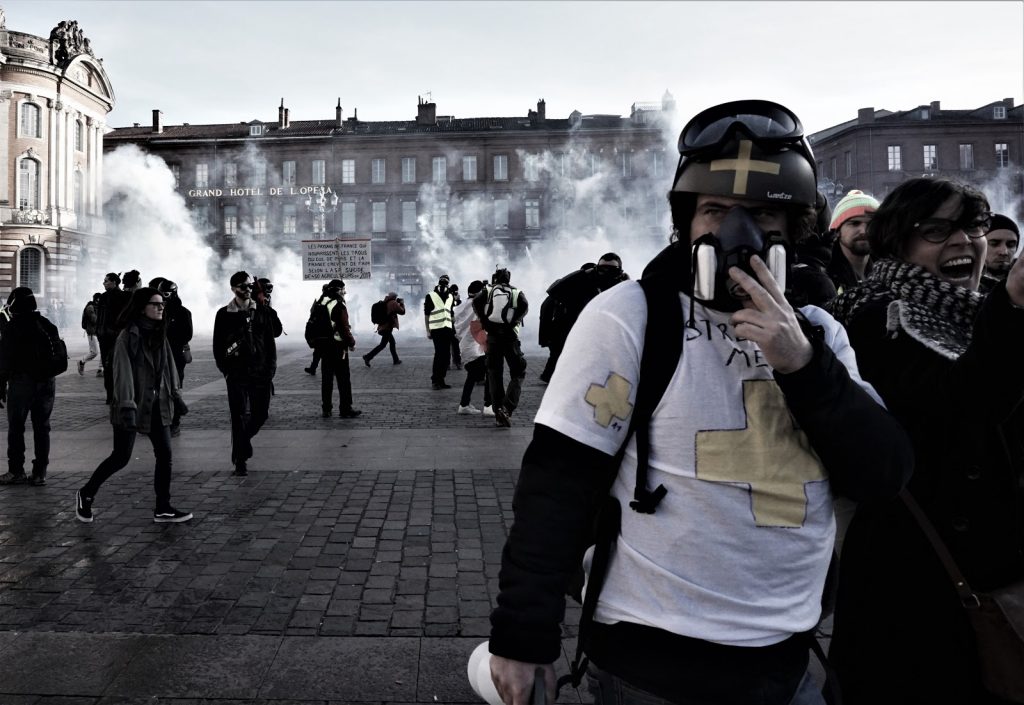
The group of protesters stands facing the police in full riot gear. There are metres of empty space in between them and, apart from perhaps one or two bottles that shatter in front of the feet of the police, the situation is peaceful. It is impossible to say whether the trigger was a smoke bomb which someone brought, or if the police decided that the protest had gone on long enough, but suddenly more police are coming from the other end of the square and thick clouds of tear gas hang in the air. From now on the protesters are met with tear gas in almost every street, often launched at them from every direction making the air unbreathable. Shortly after sunset a group of protesters, their hands in the air as a sign of peacefulness, heads down a narrow street that is blocked by the police. All of a sudden, the group of police officers charges at them. One of them fires something, perhaps a flash-ball or a stun grenade, into the crowd that turns on their heels and takes flight.
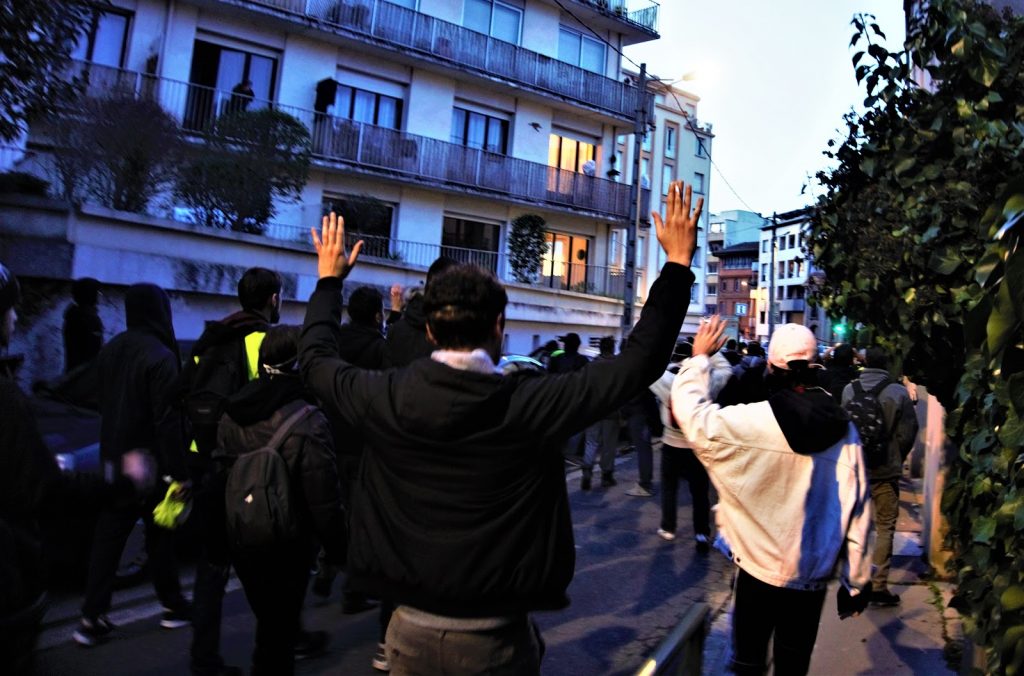
A Stanford Prison Experiment on the Streets
Does that mean then that all cops are indeed bastards? Not quite. As Jérôme Rodrigues, one of the more prominent figures of the gilets jaunes movement said, ¨this violence is applied by the police simply because they are the shield of the powerful that tremble under the pressure of the people.¨ The Stanford prison experiment helps to better understand the link between the protests, the police and violence. While there is an abundance of criticism directed at the experiment and its findings, it nonetheless demonstrates how our environment influences our behaviour and how power can corrupt and provoke extreme actions.
The first important thing to note is that there is a clear power asymmetry between the gilets jaunes and the police. While the protesters usually don’t have anything but makeshift means to protect their mouths, noses and eyes from tear gas, as well as the occasional glass bottle, the police is equipped with professional protective gear including gas masks and shields, batons, water cannons, pepper spray, stun grenades, tear gas and flash-balls. During the experiment about a third of the participants assigned a role as guard began to abuse their power which escalated into degrading behaviour towards the ‘prisoners’. And even those who did not like their role as guard and where thus not prone to abuse their power did not step in. It implies that if there are institutions and structures creating a power imbalance, people can be corrupted by this power and behave in extreme ways which might explain incidents of extreme responses of the police to the gilets jaunes’ protests.
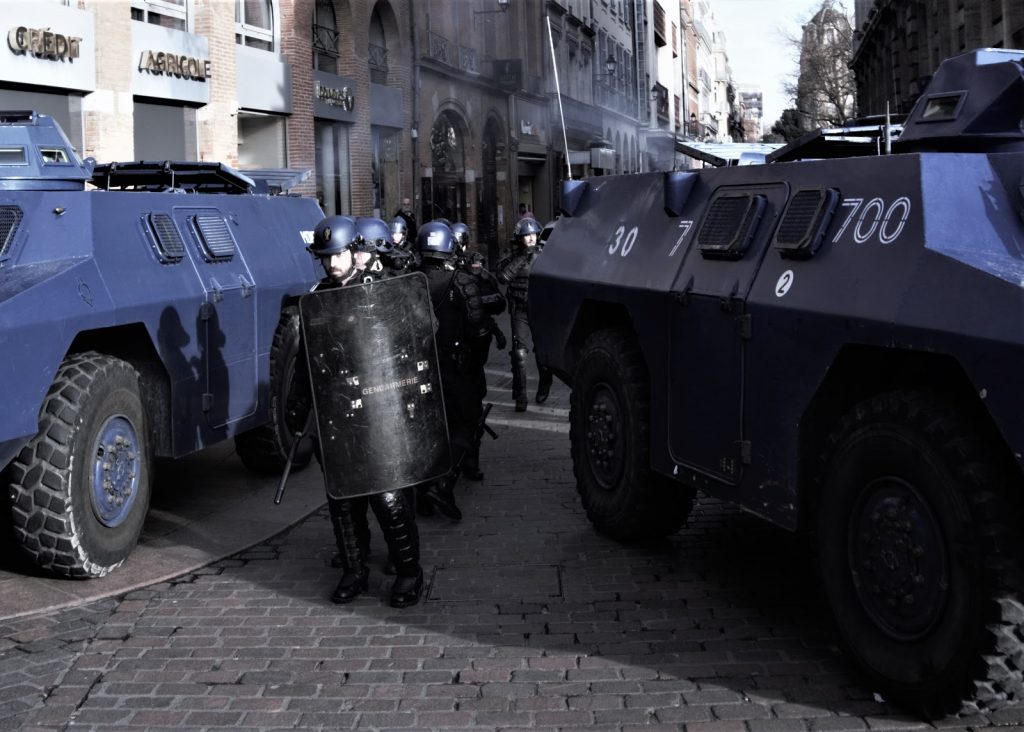
The second idea the Stanford prison experiment suggests, supported by Milgram’s obedience study, is that we behave as we believe we are expected to behave, especially if these expectations come from a superior authority . Thus, police officers using more force than necessary can be traced to obedience towards superior officers or institutions. In such a case it is very likely that the police officers in question do not act out of an intent to hurt anyone but believe in fact that they merely do what is necessary to control the situation.
What transpired in the analysis following the experiment was that a lack of criticism by authorities can be – consciously or subconsciously – interpreted as approval or encouragement and further increase the abuse of power. And indeed, the responses of the French government to the harm caused by flash-balls and stun grenades were either defending the use of them or an outright denying the injuries caused. On February 8 the Conseil d’État, France’s highest administrative jurisdiction, furthermore allowed the police to continue launching flash-balls at protesters, despite criticism by human rights organisations such as the Ligue des droits de l’Homme. This decision legitimises the violence against protesters – and not only against those who actually attempt to start a riot but also against those who peacefully exercise their right to protest since a flash-ball launched into a crowd can hit anyone who happens to stand in its way.
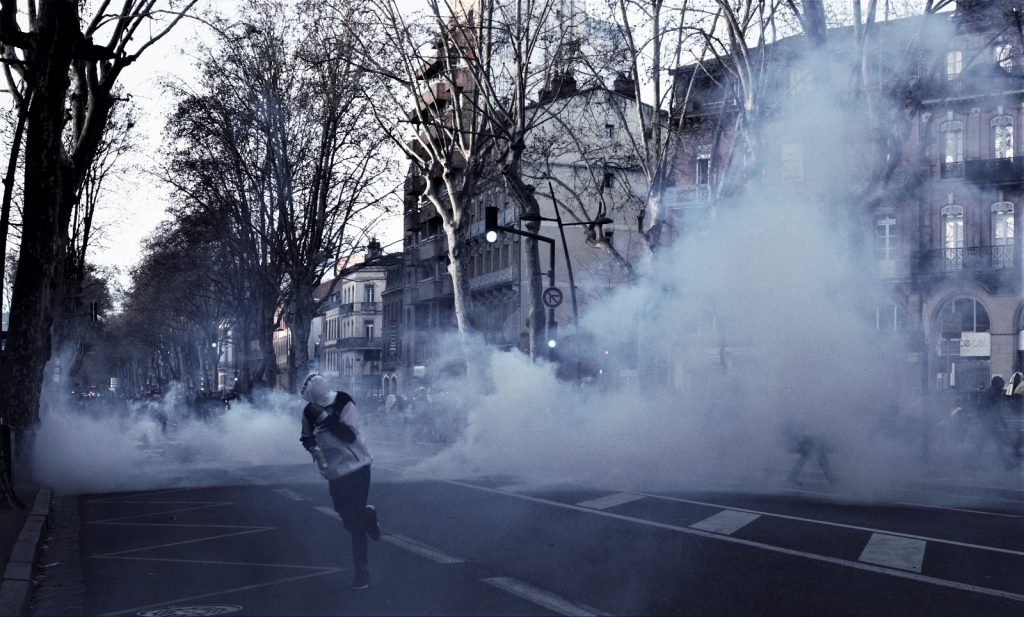
While tear-gas and flash-balls are a relatively effective means to disperse protesters – at least temporarily – they don’t do much to appease the situation. Instead they foster more anger and resentment against the government and its tool of state violence, the police. As Louis Boyard, president of the union nationale lycéene (UNL) who was wounded by a flash-ball or grenade, said according to the POI’s newsletter: ‘A government that uses violence against its youth is a government that is scared, it is a government that is close to giving in. […] I will give in neither to violence nor to fear.’
Macron’s Great Mess
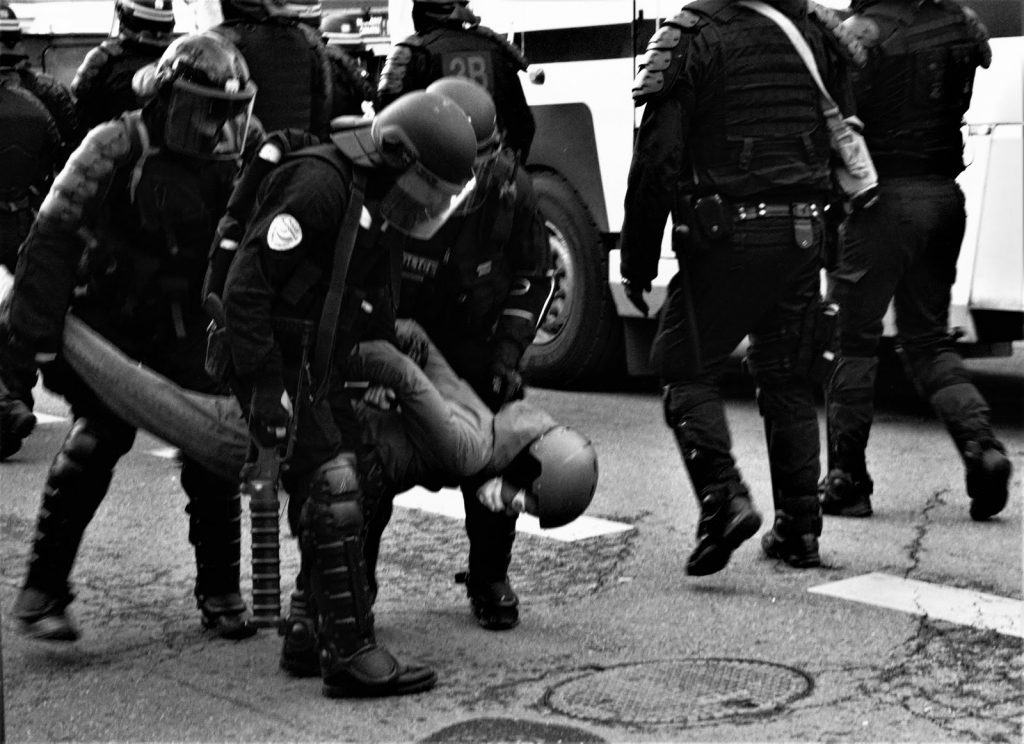
Violence against protesters frequently takes place on the street but also in the courts. It finds expression in preventive arrests that reportedly are at times based on nothing more but a slight suspicion, and in France’s new anti-rioting bill that according to critics does not only target rioters but can easily be abused to limit the people’s freedom to protest in general. It is a form of violence that cannot be explained with simplistic answers pointing i.e. at corrupt police. Rather it has its roots in often undiscovered or invisible institutions and power structures that are now brought to light. It is evidence of a government so out of its depth that it hides behind a shield of an instrumentalised police and judiciary apparatus, and which has lost the trust of the people. Yet, repressive responses to the frustration and despair of the gilets jaunes will not calm tempers. Neither will Macron’s grand débat which is seen by some as a PR strategy giving it the nickname grand dégat (‘great mess’). The only sensible thing Macron’s government can do is to take decisive actions that demonstrate a convincing step towards the ordinary people.
by Merle Emrich
Photo Credits
all photos by Merle Emrich, All Rights Reserved
Related Articles:







